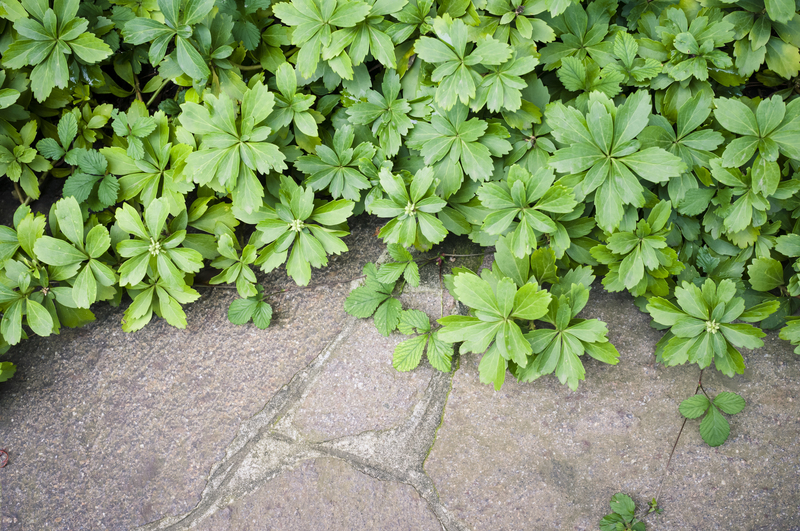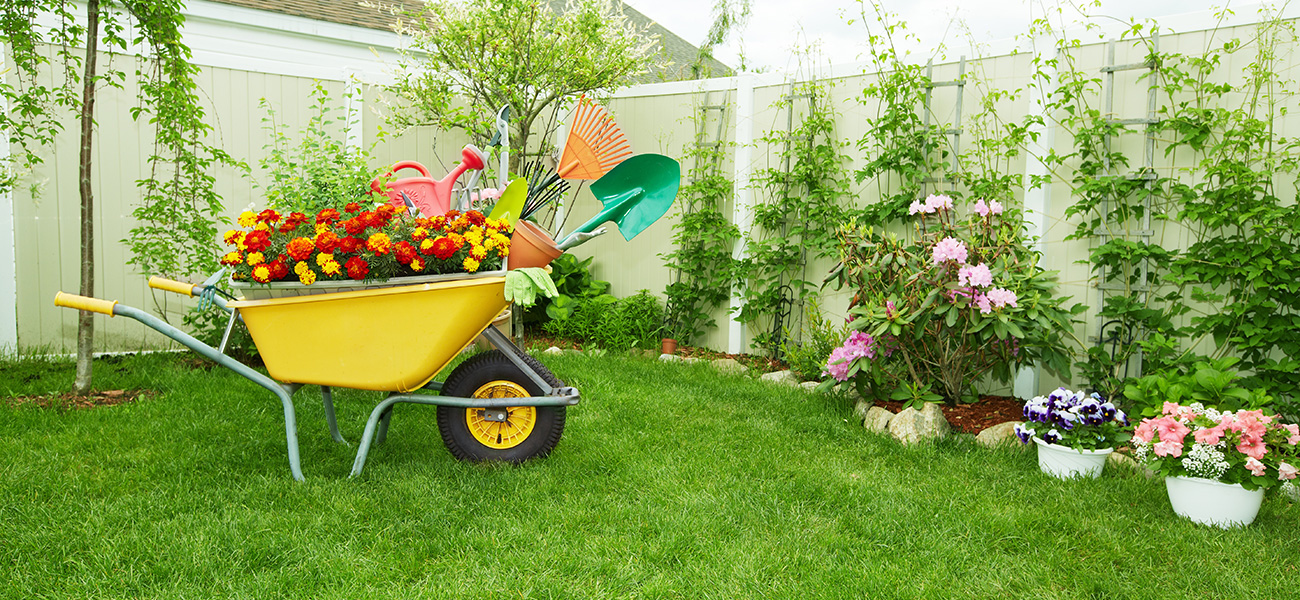Tips to Shield Your Garden from Winter's Chill
Posted on 13/08/2025
Tips to Shield Your Garden from Winter's Chill
When winter descends and chilly winds threaten your flourishing garden, preparation is key. Shielding your garden from winter's chill isn't just about preserving plants; it's about ensuring a vibrant, healthy landscape come spring. Whether you're a seasoned horticulturist or a first-time gardener, this comprehensive guide will provide you with garden winter protection tips and techniques to keep your outdoor sanctuary resilient during frosty months. Discover optimal strategies and practical advice to guard your garden against winter's harsh elements and give your plants the care they deserve.
Why Is Winter Protection Crucial for Your Garden?
Winterizing your garden is vital for plant health and the longevity of your landscape. Frost, snow, and freezing temperatures can cause irreversible damage to plants, flowers, shrubs, and even soil. Many gardens suffer from wilting, freezing, and rot if left unprotected. By adopting robust winter garden protection measures, you not only preserve your investment but also set the stage for explosive growth in the coming spring.
- Prevents frost damage to stems and foliage
- Minimizes root shock and soil disruption
- Reduces loss of perennial plants and bulbs
- Protects garden infrastructure like raised beds and pathways

Top Proven Tips to Shield Your Garden from Winter's Chill
Give your plants the best shot at surviving and thriving through winter with these winter garden protection strategies.
1. Mulching: Your First Defense Against Winter Cold
Mulch is more than just a landscaping accessory--it's an essential barrier against the biting cold. By laying a thick layer (ideally 2-4 inches) of organic mulch such as straw, wood chips, shredded leaves, or bark over the soil, you insulate plant roots and maintain soil temperature.
- Apply mulch after the ground starts to freeze but before heavy snow falls
- Keep mulch a few inches away from plant stems to avoid rot
- Use compost mulch for bonus nutrients, nourishing your garden for spring
2. Cover Up: Frost Cloths, Garden Blankets, and DIY Solutions
Gentle covers can be a true lifesaver, particularly for tender perennials and delicate annuals. Using breathable fabrics like frost cloths, horticultural fleece, or homemade sheets and burlap can trap warm air without suffocating your plants.
- Drape covers over plants before sunset to trap residual warmth
- Secure fabrics at the base with rocks or stakes to prevent wind from blowing them away
- Remove covers during the day when temperatures rise to avoid condensation and mold
3. Shelter Delicate Plants: Use Cloches and Cold Frames
Cloches (miniature greenhouses) and cold frames are ideal for protecting individual plants or small groups from frost. These structures trap heat during the day and release it slowly at night, safeguarding seedlings and sensitive vegetables.
- Repurpose clear plastic bottles by cutting off the bottom and placing over plants for DIY cloches
- Invest in sturdy cold frames for reusable, long-term plant protection
- Ventilate during mild periods to prevent overheating inside the covers
4. Watering Wisely: Hydrate Before the Freeze
Many gardeners underestimate the importance of proper watering before winter. Moist soil retains heat better than dry earth, helping to insulate roots from sudden temperature drops. However, avoid overwatering; saturated soil can rot roots during cold snaps.
- Give a deep, thorough watering before the ground hardens
- Target the root zone rather than foliage to maximize absorption
- Avoid watering once hard freeze conditions are expected
5. Windbreaks and Fences: Block Out Cold Gales
Winter winds accelerate dehydration and chill, damaging both plants and soil. Erecting windbreaks--such as lattice panels, burlap screens, or even makeshift fences--provides essential shelter and helps prevent winter burn on evergreens.
- Position windbreaks on the side of prevailing winter winds
- For hedging, plant evergreens or ornamental grasses as living shields
- Ensure windbreaks are tall enough to offer meaningful protection
6. Move Potted Plants to Safety
Potted and container gardens are especially vulnerable to freezing temperatures, as they have less insulation than in-ground plants. One of the best winter garden care tips is to relocate pots to a sheltered spot:
- Place pots along a south-facing wall or inside an unheated greenhouse
- Group containers together and wrap sides with bubble wrap or burlap for extra protection
- Raise pots off the ground with bricks or pot feet to prevent water-logging and frost damage
7. Prune With Caution
Proper pruning helps plants focus their energy on survival rather than growth during dormancy. However, incorrect pruning can expose tender areas to cold, so it's crucial to know the right time and method.
- Prune dead or diseased wood in late fall before harsh weather sets in
- Avoid heavy pruning which encourages new growth that's susceptible to frost
- Wait until late winter or early spring for major pruning tasks
8. Protect the Soil: Using Row Covers and Ground Covers
Bare soil is more likely to suffer from erosion, nutrient loss, and freezing. Implementing row covers and living ground covers--like winter rye or clover--adds a layer of insulation, prevents weeds, and improves soil structure over winter.
- Lay biodegradable row covers for season-long protection
- Sow a winter cover crop in fall for green manure and natural weed suppression
- Mulch bare earth areas to prevent compaction and nutrient leaching
Common Winter Hazards for Your Garden and How to Avoid Them
To better shield your garden this winter, it helps to recognize typical threats. Below are some winter gardening challenges and the solutions to counteract them:
- Frost Heave: Repeated freeze-thaw cycles push plants out of the ground. Deep mulch and regular checks keep roots anchored.
- Rodent Damage: Mice and voles may burrow under snow and attack roots. Protect with mesh guards and tidy up plant debris.
- Snow Load: Heavy snow smothers shrubs and small trees. Gently brush off accumulated snow, but do not shake frozen branches--instead, let them thaw naturally.
- Winter Burn: Evergreen leaves turn brown from dehydration. Water well before freezes and shield from wind; spray with anti-desiccant if needed.
Expert Gardeners' Winter Protection Checklist
Want a quick overview? Here's a handy checklist to keep your garden safeguarded through the coldest months:
- Apply a thick layer of organic mulch to exposed soil
- Cover susceptible plants with frost blankets or horticultural fleece
- Set up windbreaks to minimize harsh wind damage
- Move pots and sensitive plants to sheltered locations
- Water deeply before the first hard frost
- Inspect structures: Check fences, trellises, and raised beds for stability
- Prune lightly to remove dead or diseased growth
- Install rodent guards and prevent pest sheltering with tidy cleanup
Special Care for Different Types of Gardens
Protecting Vegetable Gardens
If you maintain a winter vegetable garden, extra care is required to ensure crops survive and overwintering vegetables (like kale or carrots) remain harvestable.
- Use row covers or tunnels to maintain a microclimate above freezing
- Mulch root crops deeply to keep soil workable for winter harvesting
- Plant cold-hardy varieties in the fall for increased resilience
Caring for Perennial Borders
Your established perennials will appreciate a little extra attention during cold spells:
- Wait until late winter or early spring to cut down spent stems--these act as natural insulation
- Mulch heavily around crowns but keep mulch from covering plant centers to avoid rot
Protecting Trees and Shrubs
Young trees and recently planted shrubs are particularly at risk during winter's chill. Steps to protect them include:
- Wrap trunks with tree wrap or burlap to prevent sunscald and cracking
- Stake young trees securely to withstand heavy winds and snow
- Apply organic mulch in a donut shape around the base, keeping it away from the trunk
Safeguarding Container Gardens
Reiterate moving pots to protected spots and wrapping them in insulation. Place containers on feet or bricks for maximum drainage and cover the soil surface with straw or mulch.
The Importance of Monitoring Throughout the Season
Successful winter garden maintenance doesn't end with a single round of preparation. As weather patterns shift, periodic checks are critical. Look for damaged spots in covers, displaced mulch, and signs of animal disturbance. After severe weather events, inspect your garden and make adjustments as needed. Your vigilance will pay off with a thriving spring garden.
Eco-Friendly and Sustainable Winter Protection Options
Caring for your garden while considering the planet ensures healthier soil and a better future. Explore these sustainable garden protection ideas:
- Use natural materials like straw, leaf mold, or coconut coir for mulch
- Repurpose old sheets or clothing as protective covers instead of buying plastic
- Compost spent annuals and fallen leaves rather than burning or tossing
- Install rain barrels to collect and use water efficiently before freeze

Frequently Asked Questions About Winter Garden Protection
Q: When should I start preparing my garden for winter?
A: Begin winterizing your garden in late autumn, just before consistent frost is forecast. This timing ensures plants are dormant but still able to benefit from protective measures.
Q: Is it necessary to cover all plants?
A: Focus on tender annuals, delicate perennials, young trees, and container plants. Hardy natives and established shrubs often withstand cold with minimal protection.
Q: Can I use plastic to protect my plants?
A: While plastic offers some frost protection in emergencies, it can trap moisture and cause overheating if used incorrectly. Always use breathable fabrics and remove covers during sunny periods.
Q: Should I continue to water my garden during winter?
A: Water thoroughly before the ground freezes. During winter, water only if there's a dry spell and the ground hasn't frozen solid.
Conclusion: Embrace the Seasons and Garden with Confidence
Shielding your garden from winter's chill is a labor of love, but the rewards are immense. With strategic mulching, proper covering, wise watering, and ongoing vigilance, your plants will weather the cold and emerge even stronger in spring. Follow these winter garden protection tips to nurture healthier soil, preserve your favorite plants, and ensure seasonal joy year after year. Through careful planning and eco-conscious practices, you'll become a steward of your garden--no matter how fierce winter may be.
Let your garden rest this winter, knowing you've taken every step to protect and prepare it for a bountiful spring awakening!



